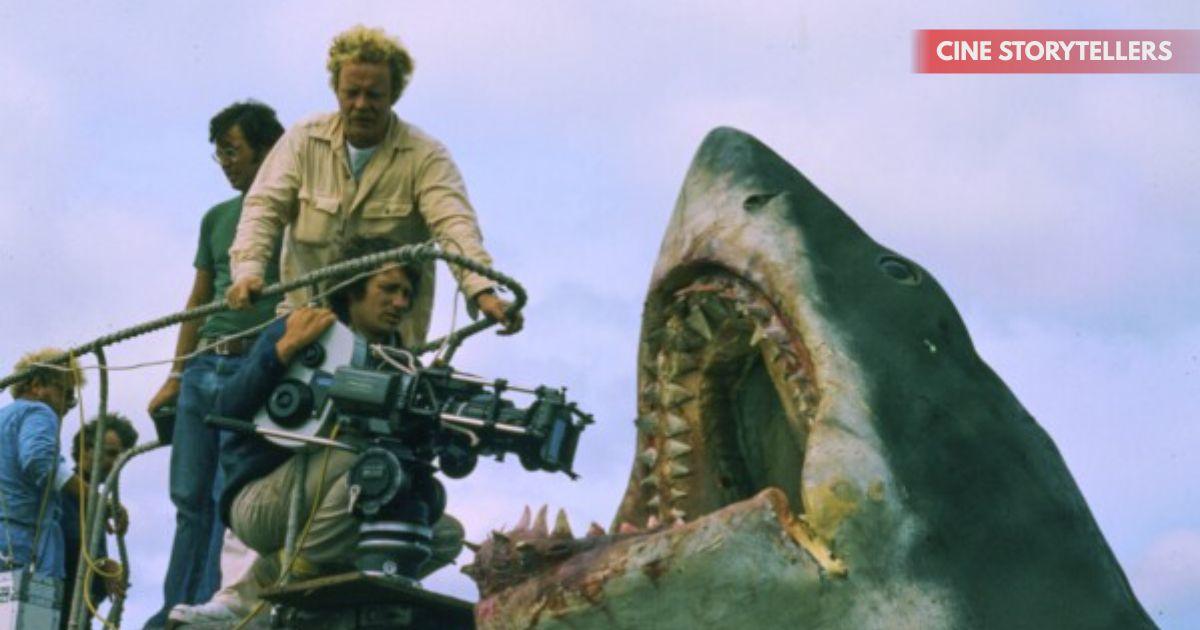Summary
Steven Spielberg’s Jaws, released on June 20, 1975, revolutionized Hollywood by creating the modern summer blockbuster. Despite production issues—especially with the malfunctioning mechanical shark—Spielberg used suspense and innovative direction to craft a groundbreaking thriller. The film’s wide-release strategy and aggressive marketing campaign set new industry standards. It became the first movie to gross over $100 million, influenced how studios approach big releases, and left a lasting cultural impact. Fifty years later, Jaws remains a cinematic milestone celebrated for its storytelling, tension, and enduring legacy in pop culture and film history.
In 1975, a film about a killer shark took the world by storm. Directed by a then 27-year-old Steven Spielberg, Jaws was more than just a box office smash. It ushered in a new era of filmmaking, reshaped how movies were marketed and released, and laid the foundation for what we now call the summer blockbuster.
Fifty years later, Jaws remains a cornerstone of cinematic history and a masterclass in suspense, storytelling, and innovation.
The Origins of Jaws
Jaws was based on the 1974 novel by Peter Benchley, inspired by real-life shark attacks. Universal Pictures quickly acquired the rights, and Spielberg—hot off his debut feature The Sugarland Express—was tapped to direct.
While the book was a straightforward thriller, Spielberg’s vision focused on the characters and psychological tension rather than pure gore. This decision would become pivotal in creating a lasting impact on audiences and critics alike.
A Difficult Production with Game-Changing Results
Filming began in Martha’s Vineyard in May 1974 and was plagued with problems from the start. Chief among them was the mechanical shark—nicknamed “Bruce”—which malfunctioned constantly in the saltwater environment.
Because the shark rarely worked, Spielberg was forced to innovate. Instead of showing the shark directly, he used clever camerawork, underwater shots, and John Williams’ now-iconic score to build suspense. Ironically, these creative workarounds became the film’s greatest strengths.
What could have been a B-movie about a monster shark evolved into a high-tension psychological thriller that relied on dread, character development, and slow-building terror.
Breakthrough Performances
The cast of Jaws delivered unforgettable performances. Roy Scheider played Chief Martin Brody, the reluctant hero trying to protect his town. Richard Dreyfuss brought charm and credibility to marine biologist Matt Hooper. But it was Robert Shaw, as the grizzled shark hunter Quint, who stole the show.
His monologue about the sinking of the USS Indianapolis remains one of the most chilling and emotionally charged scenes in film history. Delivered in a single take, it added depth, fear, and gravitas to a film that already excelled in tension.
Inventing the Summer Blockbuster
Jaws premiered on June 20, 1975, and its release strategy was revolutionary. Instead of a limited rollout, Universal went wide—opening the film in over 400 theaters and backing it with an unprecedented national TV marketing campaign.
This approach was almost unheard of at the time. The result? A cultural phenomenon. Jaws became the first movie in history to earn over $100 million at the box office. It held the record as the highest-grossing film until Star Wars debuted in 1977.
More importantly, it set the template for how major films would be released: big budgets, wide openings, national advertising, and summer release dates. The “summer blockbuster” was born.
Impact on the Film Industry
The success of Jaws marked a seismic shift in Hollywood. Studios realized that high-concept films with mass appeal and strong marketing could generate enormous profits. This led to a shift in studio priorities, with more resources being funneled into major tentpole productions.
Filmmakers also began to recognize the power of suspense and storytelling over pure spectacle. Spielberg’s restraint in showing the shark—a necessity during production—redefined how filmmakers approached horror and thrillers.
Additionally, Jaws proved that genre films could be critically acclaimed and financially successful, breaking down barriers for science fiction, horror, and adventure genres in mainstream cinema.
Cultural Influence and Public Reaction
The release of Jaws had a significant impact on popular culture. It ignited widespread fear of sharks and sparked a temporary decline in beach attendance across the U.S. The term “shark attack” became part of everyday language, and the great white shark became a symbol of primal terror.
At the same time, Jaws inspired increased public interest in marine biology and oceanography. While some marine conservationists criticized the film for villainizing sharks, others credit it with sparking curiosity and conversation about ocean life and ecosystems.
The film’s theme music, composed by John Williams, became synonymous with danger and suspense. Its two-note motif is one of the most recognizable scores in film history and continues to be parodied, referenced, and celebrated across media platforms.
Awards and Critical Acclaim
Jaws was nominated for four Academy Awards and won three: Best Film Editing, Best Original Score, and Best Sound. It was also nominated for Best Picture but lost to One Flew Over the Cuckoo’s Nest.
Critics hailed the film as a breakthrough in both direction and suspense. Roger Ebert praised Spielberg’s pacing and control, calling it “one of the most effective thrillers ever made.” The American Film Institute later ranked Jaws as the 2nd greatest thriller of all time, behind only Psycho.
The Legacy of Jaws
Half a century later, Jaws is still regarded as one of the greatest films ever made. It has been preserved in the U.S. National Film Registry for being “culturally, historically, or aesthetically significant.”
The film spawned three sequels (none directed by Spielberg), video games, theme park rides, documentaries, and decades of merchandise. While none of the sequels matched the original’s success, they kept the brand alive.
Jaws has also influenced generations of filmmakers, from James Cameron and Christopher Nolan to Jordan Peele and Quentin Tarantino, all of whom cite Spielberg’s early work as foundational to their careers.
50th Anniversary Celebrations
In 2025, the 50th anniversary of Jaws is being celebrated worldwide with special events and retrospectives.
- The Academy Museum of Motion Pictures is hosting a Jaws exhibit featuring original props, storyboards, and behind-the-scenes footage.
- A National Geographic documentary titled Jaws @ 50 will explore both the making of the film and its ecological legacy.
- Universal Studios has launched commemorative merchandise and pop-up attractions at its Orlando and Hollywood parks.
- Theatrical re-releases and outdoor screenings are planned in major cities, including Martha’s Vineyard, where much of the original film was shot.
Also Read : Megan Thee Stallion Brings the Heat to Love Island USA With Surprise Appearance
Conclusion
Jaws is more than just a movie about a shark—it is a cinematic landmark that transformed the entertainment industry. From pioneering the summer blockbuster format to redefining suspense and storytelling, its influence is still felt in today’s biggest films.
Fifty years later, Jaws continues to thrill new generations, inspire filmmakers, and serve as a testament to the power of creative problem-solving under pressure. It remains a timeless reminder that sometimes, showing less can deliver far more.
Join our WhatsApp channel for more updates and information about celebrities and entertainment



